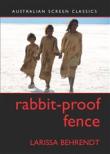AustLit
Units Teaching this Work
| Text | Unit Name | Institution | Year |
|---|---|---|---|
y
 Rabbit-Proof Fence
Strawberry Hills
:
Currency Press
,
2012
8760038
2012
single work
criticism
(taught in 1 units)
Rabbit-Proof Fence
Strawberry Hills
:
Currency Press
,
2012
8760038
2012
single work
criticism
(taught in 1 units)
'Written by Christine Olsen and directed by Phillip Noyce, Rabbit-Proof Fence tells the story of Doris Pilkington’s mother, the then fourteen-year-old Molly Craig, her sister Daisy, aged eight, and cousin Gracie, aged eleven, who were all forcibly removed from their families at Jigalong in the Pilbara region of Western Australia in 1931. 'Taken to the Moore River Native Settlement, a mission on the western Australian coast some 2000 kilometres from home, they were to be trained as domestic servants. Desperately home sick, Molly, Daisy and Gracie escaped, and following the rabbit-proof fence, they walked thousands of kilometres across desert back home, all the while being stalked by the authorities. 'In this honest and frank account Eualeyai and Kamillaroi woman, academic and award-winning author Larissa Behrendt finds much about this story that resonates: the need and desire to find one’s home, one’s sense of place, one’s sense of self. This is undoubtedly a universal quest but for Aboriginal people taken from their families, as these children were, that search for home, that need to feel complete, is all the more powerful.' (Publication summary) |
Expressive Culture: Film | NYU - Sydney | 2016 (Semester 2) |


